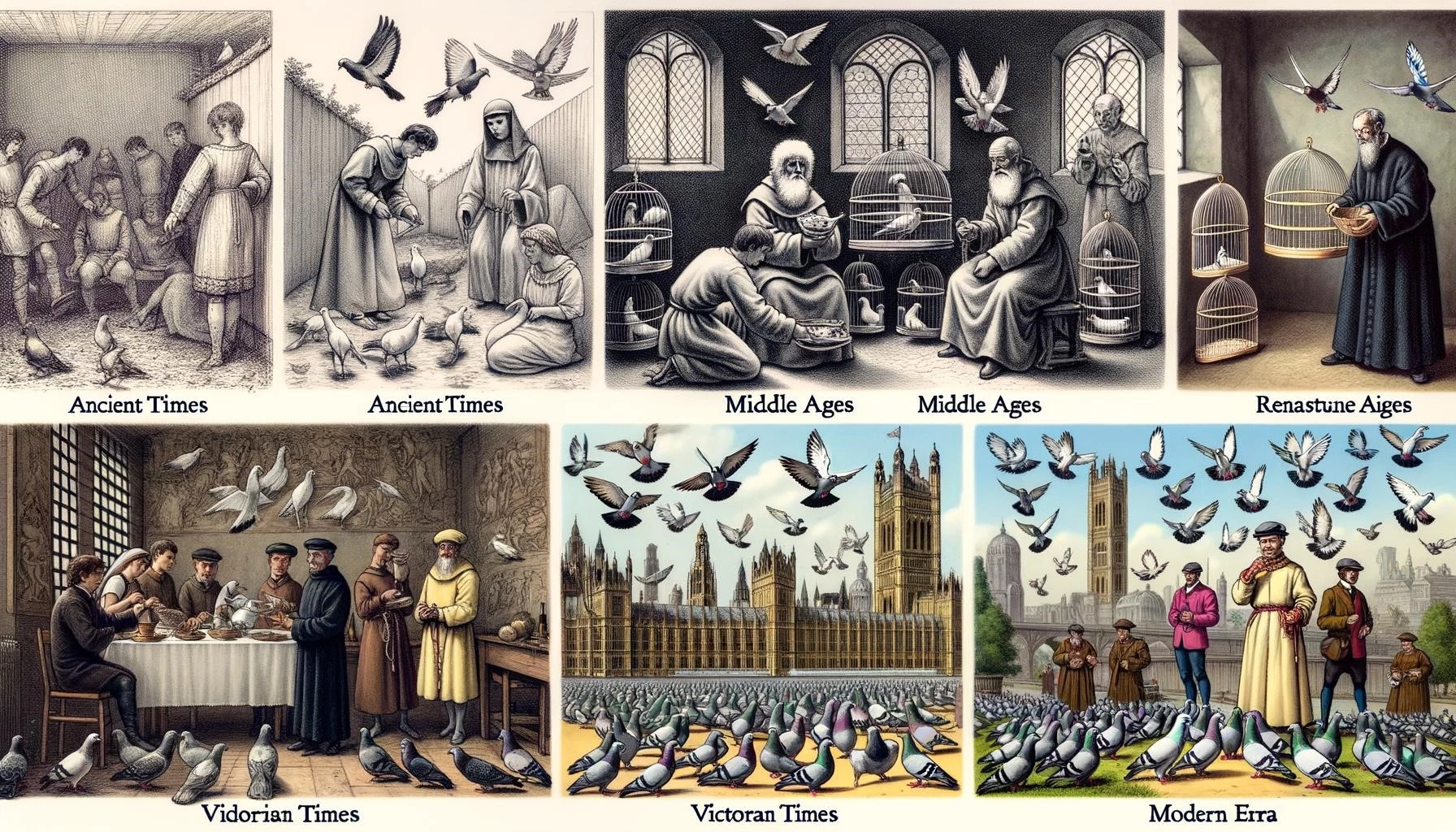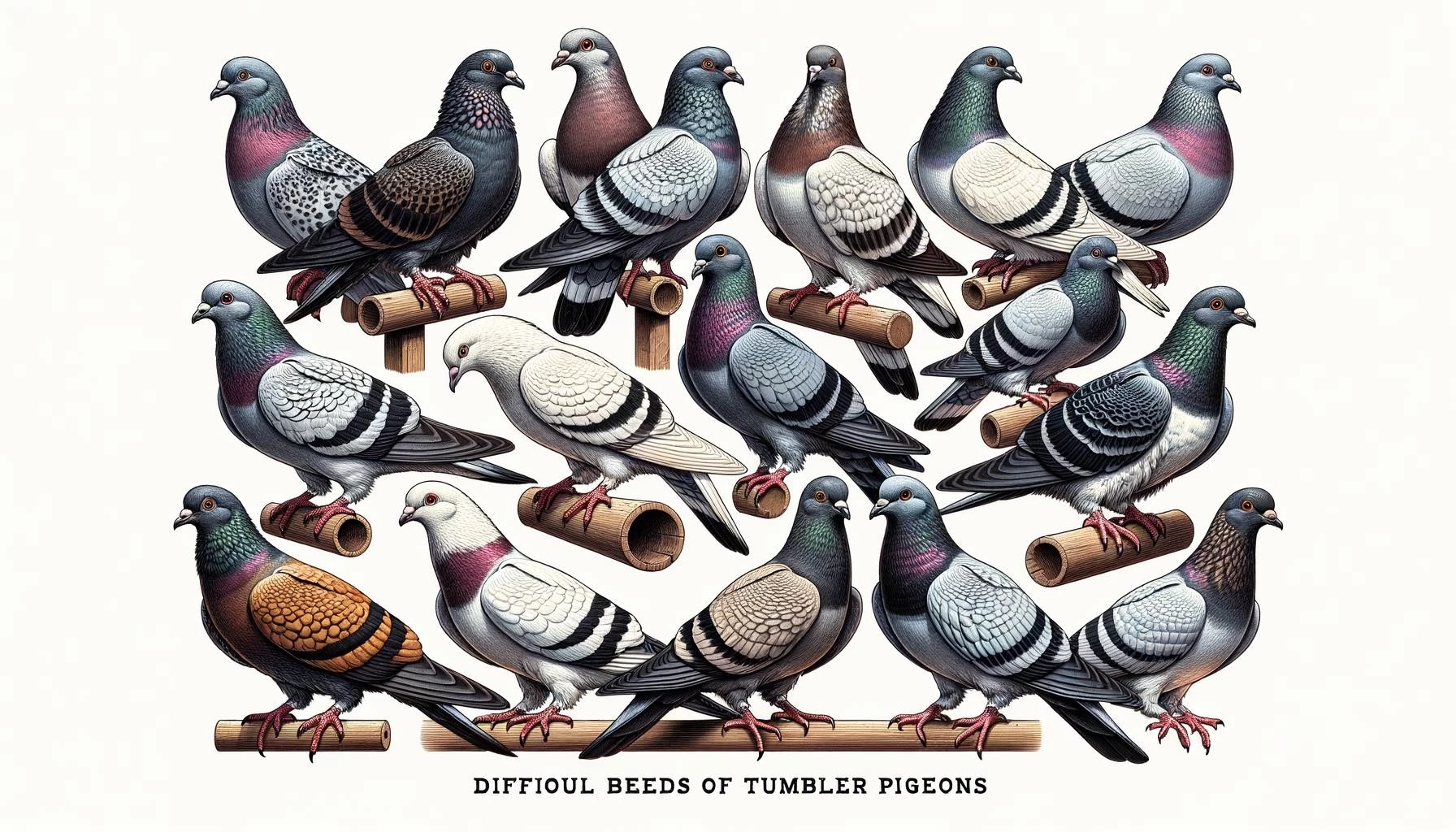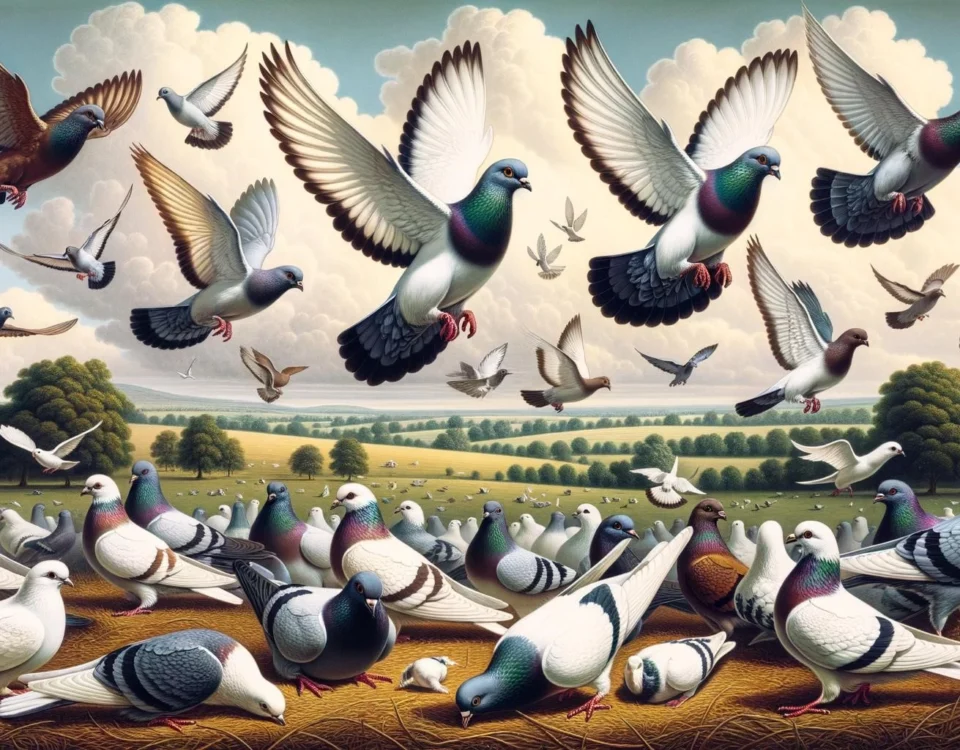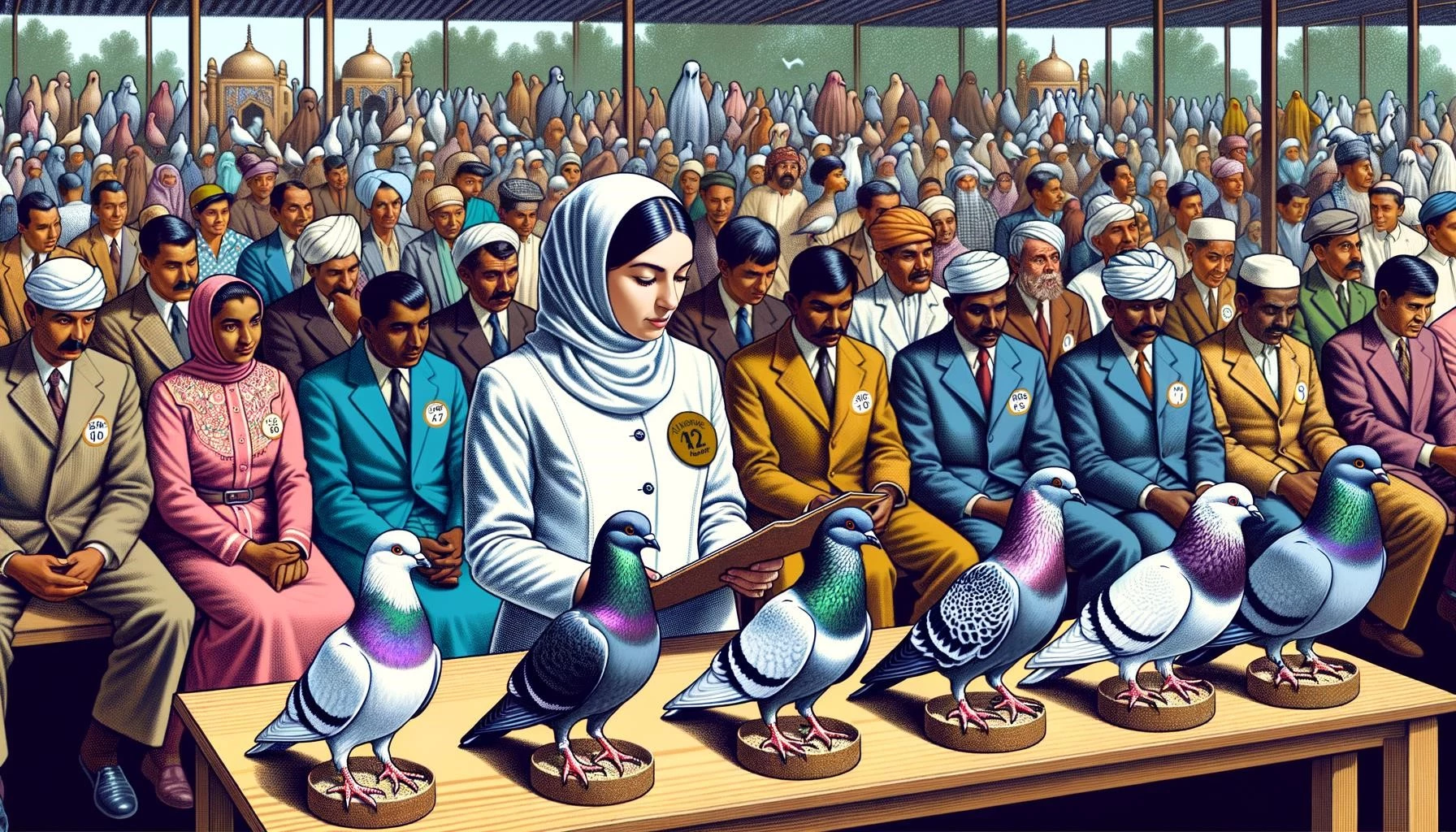Tumbler pigeons are a variety of domesticated pigeons that are known for their ability to tumble or roll over backwards in flight. This unique aerial acrobatic behavior has been selectively bred in various pigeon breeds for centuries. The history of tumbler pigeons can be traced back to ancient civilizations, where they were used for message carrying and pigeon racing.
Key Takeaways
- Tumbler pigeons are descendants of the rock dove and have been selectively bred for their ability to tumble or roll over backwards in flight.
- The history of tumbler pigeons dates back to ancient civilizations, where they were used for message carrying and pigeon racing.
- Tumbler pigeons come in a wide variety of breeds, each with its own unique characteristics and physical appearances.
Origins
The domestic pigeon, to which tumbler pigeons belong, is a subspecies of the rock dove or rock pigeon. The rock pigeon is considered the world’s oldest domesticated bird, with evidence of its domestication existing over 5,000 years ago. Ancient civilizations such as Mesopotamia and Egypt have documented the use of domesticated pigeons for various purposes, including messenger pigeons.
The tumbling ability of pigeons has been known for centuries. References to pigeons with this tumbling ability have been found in ancient texts, such as the book The Pigeon by Wendell Levi, which mentions tumbling pigeons existing in India. Over time, these pigeons have been bred and refined to enhance their tumbling skills and create specific breeds of tumbler pigeons.
Uses and Cultural Significance
Tumbler pigeons have played significant roles in human history and have been used for various purposes. Their ability to perform aerial acrobatics, including tumbling and rolling in mid-air, caught the attention of humans who discovered the potential of training and utilizing pigeons for specific tasks.
In ancient times, tumbler pigeons were used for message carrying, as they could easily navigate long distances and deliver important information. They were also popular for pigeon racing, a competitive sport that involved testing the speed and endurance of pigeons. Pigeon racing clubs and associations were established to organize and promote these races.
As pigeons became more appreciated for their unique abilities and appearances, tumbler pigeons also gained popularity in the exhibition and fancy pigeon community. These pigeons were bred for their aesthetic qualities and showcased in pigeon shows and competitions. The cultural significance of tumbler pigeons can be observed in the long history of pigeon breeding and the admiration of their beauty and acrobatic skills.
Variety of Breeds
Tumbler pigeons come in a wide variety of breeds, each with its own distinct characteristics and physical appearances. Some of the popular tumbler pigeon breeds include the English Bald Head Tumbler, English Clean Legged Tumbler, English Magpies, Berlin Short-faced Tumbler, Baja Tumbler, Apatin Tumbler, and Turkish Tumbler, among others.
These breeds vary in plumage colors, body types, feather configurations, and beak lengths. The physical appearance of tumbler pigeons can range from blue, black, brown, and white plumage colors, with a round head and a forehead that may protrude slightly compared to regular pigeons.
In conclusion, the history of tumbler pigeons dates back to ancient times, where they were valued for their aerial acrobatics and utilized for message carrying and pigeon racing. Over the years, tumbler pigeons have become popular in the exhibition and fancy pigeon community, with a wide variety of breeds showcasing their unique tumbling abilities and aesthetic qualities.








